

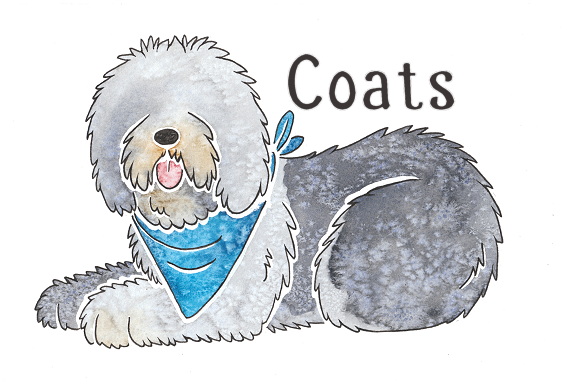
Genetic Bases for Coat Types

Already know what you're looking for? Quick Links | ||

Hairlessness
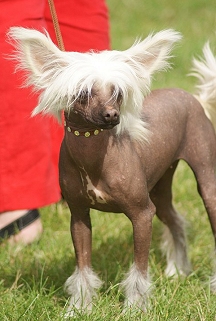
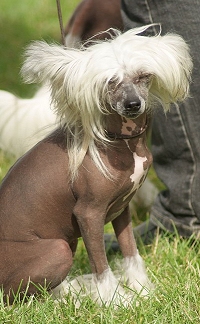
There are four hairless breeds of dog - the Mexican Hairless (Xoloitzcuintle), Peruvian Inca Orchid, American Hairless Terrier and Chinese Crested Dog.
The Xolo, Inca Orchid and Chinese Crested all have dominant hairlessness, so they only need one copy of the gene to be hairless.
In fact, all hairless dogs of these breeds are heterozygous for hairlessness, because it is one of the only known examples in dogs of an embryonic lethal gene. This means
that a homozygous dog (one with two copies of the hairless gene) will be re-absorbed into the womb.
Because all hairless dogs of these breeds are heterozygous, breeding a hairless dog to a hairless dog will result in some puppies which miscarry (the doubles), some which
are normal hairless dogs (the singles), and some which are not hairless at all. Remember our Punnet squares for the merle gene? Mm x Mm results in one
MM (double merle), two Mm (normal merles), and one mm (non-merle). This is the same for hairless dogs.
The coated dogs which appear in hairless litters are not always allowed to be shown, depending on the breed and the kennel club. However, the coated Chinese Crested, which is known
as the "powderpuff" variety, is accepted by all kennel clubs.
The American Hairless Terrier is very unusual indeed, because it shows one of only two known examples of recessive hairlessness in dogs.
Recessive hairlessness does just what it says on the tin - a dog must have two copies of the gene in order to express it. It is not a lethal gene, unlike
dominant hairlessness, and because all hairless AHTs are homozygous, coated puppies will never appear when a hairless dog is bred to another hairless dog.
Despite the gene being recessive, currently coated dogs do still exist in the AHT breed. As the breed is fairly new, outcrosses are done to Rat Terriers to improve the gene pool. The coated puppies
from these breedings (which would all be hairless carriers) can then be bred back to hairless dogs to produce 50% hairless puppies.
American Hairless Terriers are also all born with fur - however the hairs on a genetically hairless puppy fall out within a few months. This is because one of the alleles responsible for producing them is faulty, so the hairs are not formed properly. Most recessive alleles such as this are technically faulty, which is how they work as recessive -
when the dog has only one copy of the faulty allele then it can use the healthy copy to produce the usual protein/phenotype (as it still has the correct information to do this), however when both copies of the allele are faulty then there is no healthy copy to fall back on, so the protein in question cannot be produced, or is not correctly produced, resulting in the recessive phenotype. A recessive hairless dog cannot produce the correct proteins for healthy fur, a recessive dilute dog cannot produce the correct proteins for black hair, and so on. This
does not necessarily mean that there is anything "wrong" with the dog, as most of the loci discussed on this site affect only coat colour/type and not health or temperament. Of course, recessive genes on other loci do often cause health problems. You don't want a faulty recessive gene in the loci controlling blood cell production, for example!
However, both types of hairlessness do come with some associated health problems (not necessarily genetic). These are mainly skin conditions and allergies, and obviously, dogs with no hair are highly likely to get sunburn and skin cancer unless they are protected from the sun. Dominant hairlessness can also cause tooth problems (usually fewer molars than normal).
The other example of recessive hairlessness in dogs is a gene that pops up rarely in Scottish Deerhounds, apparently caused by a separate mutation to AHT hairlessness.

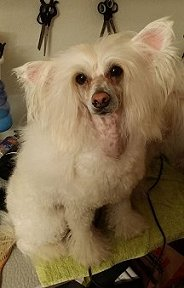
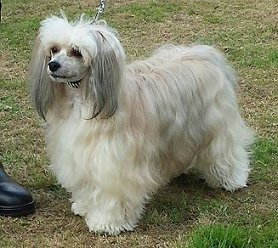
Photographs submitted by Katie Peck (left) and Annabell Joyce (right)
Examples of coated ("powderpuff") Chinese Cresteds. The face is usually shaved to give a cleaner appearance. Sometimes the ears droop under the weight of the coat, as you can see in the photo of Mr Wizzy, on the right above.

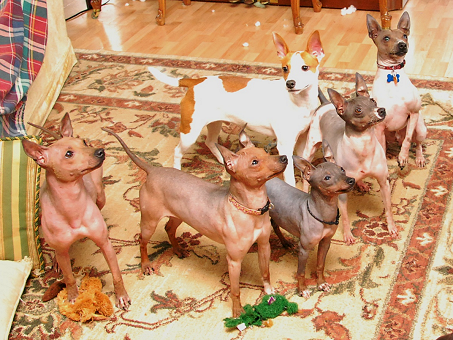
American Hairless Terrier photograph submitted by Julia Kleutsch
This picture shows both hairless and coated dogs. The two "blue-ish" dogs are in fact hairless black-and-tans rather than true dilutes - the skin on a black dog may be a blue colour. The other dogs show a range of sable and clear red. The three dogs on the left have a white trim, so are most likely heterozygous piebalds, or in other words piebald carriers (Ssp). The three dogs on the right are all homozygous piebalds (spsp)

Long Hair
There are known to be a number of genes and alleles causing long hair in dogs, and not all have been located yet. However, most of these genes are recessive. The main points of interest here are that it means a longhaired mixed breed generally must have two parents who are longhaired or long hair carriers (e.g. a Labrador x Golden Retriever would be shorthaired, so a longhaired Retriever mix must have Golden on both sides or some other longhaired breed), and the gene can also be carried down many generations without being expressed, which means that many shorthaired breeds occasionally produce longhaired puppies.
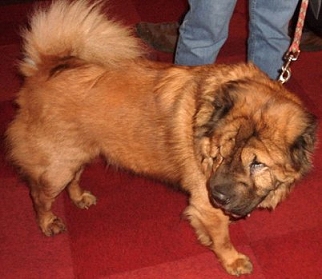

An example of a longhaired Shar Pei, known as a "bear coat", as well as a long-coated English Mastiff (the coat difference is less dramatic but note the fringes of fur on the underside of the body). Such dogs turn up in shorthaired litters relatively regularly.
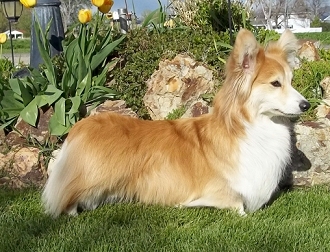
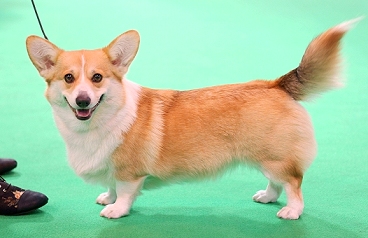
First photo is of Ravinel Fox Magick, CGC (Shippo) owned by Victoria Steen (Cheetah)
These photos show a longhaired Pembroke Welsh Corgi next to a normal one. In Pembrokes these longhaired dogs are known as "fluffy" Corgis.

Wire Hair
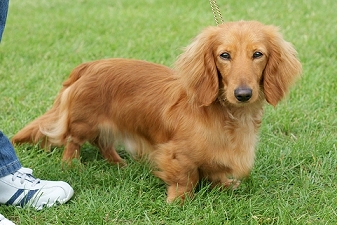

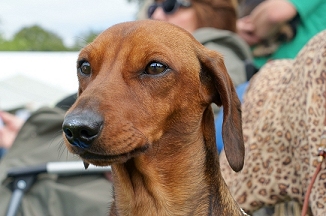
The Dachshund is a breed that comes in three coat types - Longhaired, Wirehaired and Smoothhaired. The Longhaired version is produced via a standard long coat recessive gene as described above, however the allele causing the Wirehaired coat is actually dominant. This means that if you crossed a Wirehaired Dachshund with either a Long or Smooth coat, you would get all Wirehaired puppies.
It is thought that a dog with both the longhair and the wirehair genes will be "rough-coated", meaning a wirehair with longer fur. Examples of this type of coat include the Korthals Griffon and possibly the Irish Wolfhound.

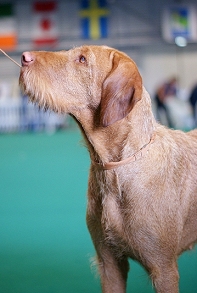
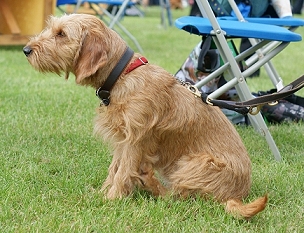
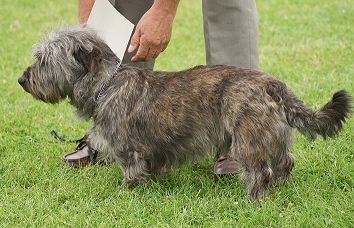
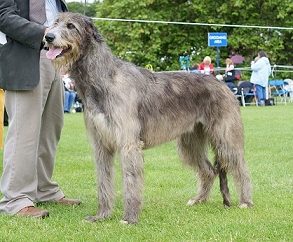
The Hungarian Wirehaired Vizsla shown above is an example of the wirehair gene on a smooth-coated dog. The coat is short but rough. The Irish Wolfhound and Glen of Imaal Terrier may be examples of the wirehair gene combined with the longhair gene, as their coats are much longer with some furnishings visible underneath the chest and on the legs and neck.

Curly Hair
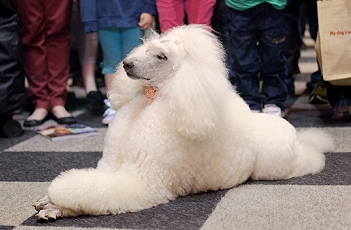
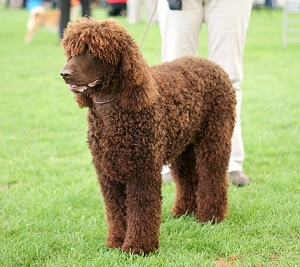
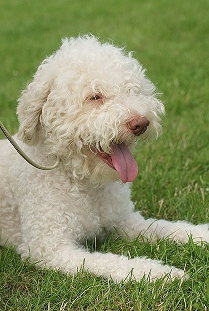
The curly hair gene is also known to be recessive. Its appearance depends on which other coat genes it is combined with - for example when combined with short hair the curls will be small and tight, but when combined with long hair they may be longer and wavier.

It is possible that this Bouvier's coat is due to a combination of the wirehair and curly hair genes.


** Please note that I am not a research scientist, and the information on this page comes from my own knowledge and observation of dogs, observational and testing data provided via e-mail by site visitors, any research papers linked on the page, and the information provided by Dr Sheila M. Schmutz on her excellent website http://homepage.usask.ca/~schmutz/dogcolors.html
For further genetics resources, see the Links page